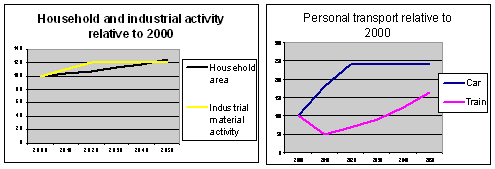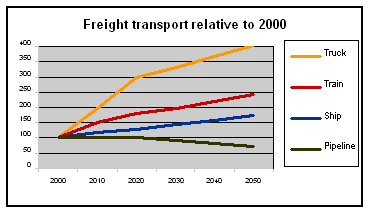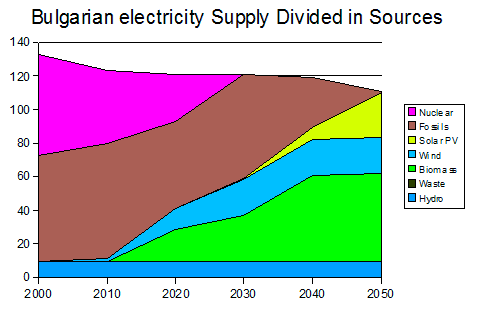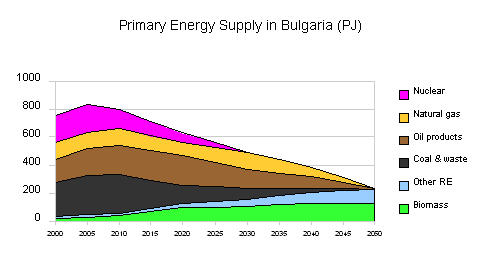| About Us | Contact Us | Member Database | Contact Database | Support Us |
News 2014 November
by Todor Slavov, Za Zemiata
A New report Published Using the Results of the Bulgarian
Sustainable Energy Vision developed in 2008-10.
The new publication: "Expanded Nuclear Power Capacity in Europe,
Impact of Uranium Mining and Alternatives" refutes
the myth
that
nuclear
energy
is clean,
reliable, cheap and climate-friendly. In reality, nuclear-energy capacity
in Eastern Europe is characterized by hidden externalised costs, technical
problems, and covered-up dangers. At the same time, alternative options
for energy production and measures for managing energy demand already
exist. The report zooms in on Bulgaria and Slovenia, where the full range
of issues with nuclear energy are exposed: from closed-down mines to
badly managed radioactive waste. Both countries consider to build new
nuclear power plant(s)
The report concludes that projected energy needs are deliberately exaggerated
by the responsible authorities, while the nuclear power-plant costs and
risks are grossly underestimated. The plans ignore the existing economically
justifiable potential for renewable energy solutions, at lower cost per
kWh. The report includes inputs from the Bulgarian "100 % Renewable
Vision by 2050" scenario worked out in cooperation with Za
zemiata and INFORSE-Europe.
Published: November 2014, 134 pp.
Download the report from: EJOLT Project website.
Introduction
Update
in 2010, November 2008.
The Bulgarian
Sustainable Energy Vision follows the principles of the
vision for EU; but it is developed to fit the visions of the Bulgarian
INFORSE member Za Zemiata.
The Vision, if followed,
will lead to a transition of the energy supply and demand with phase-out
of fossil and nuclear energy
as well as energy imports
over a
30-40-year
period.
If this vision is turned into reality it will have a number of positive
effects for Bulgaria that is dependant on imports for its fossil and
nuclear fuel supply. With a transition to domestic, renewable energy
sources, Bulgaria
will
no longer be hurt directly by the energy prices increases of fossil fuels
that many expect will come as a result of the dwindling resources of
fossil fuels. With realisation of the vision, Bulgaria would also be
in the front in the reduction of climate change, a position that can
be very valuable in the future. Further, the emphasis on local resources
will also benefit the Bulgarian economy with increased employment and
a more positive trade balance.
The vision includes a phase-out of nuclear power, increased use of renewable
energy, strong emphasis on energy efficiency, and reduction of natural
gas after 2010.
Comments are welcome!
Explanatory notes and the version in Bulgarian are available.
see the end of this page.
Factor 4 for Energy Efficiency
In line with INFORSE’s global vision for sustainable energy, the
Bulgarian Vision is based on increase of energy efficiency to reach an
average level in 2050 similar to best available technologies today. A
number of studies have shown that with best available technology, on
the market or close to market introduction, it is possible to increase
energy efficiency with a factor four or more for most energy uses. Most
energy consuming equipments will be changed several times until 2050,
and if new generations of equipment are made with optimal energy performance,
and markets are made to promote the most efficient technology, it will
not be a problem to reach today's best available technology, even though
the efficiency gains achieved are very large, - in the order of 4 times,
similar to an annual increase of efficiency of over 2% per year from
2010. This will not happen by itself, given that the "natural" technological
development in EU countries has been about 1% per year. It will require
concerted actions from stakeholders involved, but if it is done on EU-scale,
and the market therefore is large for each new generation of efficient
equipment, the changes will be cost-effective. The extra equipment costs
will be off-set by energy savings. To realise this, it is, however, necessary
to go beyond the conservatism of many market players in this field, and
develop a truly enabling market for energy efficiency throughout the
society. The factor four increase of efficiency is possible for road
transport, for industrial heat and fuel demands, and in electricity demand,
except for the agricultural sectors that has a low electric intensity
today.
The Challenge of Reducing Heat Consumption
For buildings the situation is different from equipment
and vehicles because buildings often have lifetimes of 100 years or more.
Many of
the houses to be heated in 2050 are probably already built. Statistics
indicate that efficiency of heating did not improve 2000 – 2005.
On the other hand, the need for large replacement or major renovation
of block houses build during the socialist period gives an opportunity
for large increases in efficiency, if appropriate standards and support
is in place. It is proposed to step up activities to reach an increase
of at least 1.5%/year in improvement of the efficiency of heat use in
houses and continue that for the coming 4 decades. The technical potential
for this improvement exists. In parallel, efforts to change away from
electric heating must be introduced. The efficiency increase will lead
to specific heat consumption in 2050 of 55% of the 2000-level, that is
low compared with European averages, mainly because of the low heat demand
in parts of Bulgaria.
The vision does not include heat pumps in Bulgaria as they do not have
so much added value in the Bulgarian energy system; but heat pumps have
been included in INFORSE vision for other countries with more intermittent
electricity supply (mainly windpower).
The wood use in Bulgaria should be made energy efficient as well, to
reduce resource use increase performance. Better ovens can also reduce
local pollution with particles etc.
Cooling and Electric Heating
The increasing use of air conditioning is increasing
energy demands in houses unnecessarily. While the increasing summer
temperatures
require
actions to reduce indoor temperatures, there are much more energy efficient
ways to that than present use of air-conditioning. First of all the
cooling demand can be reduced substantially by shading sun away from
windows
during the warm part of the year, by trees that have a cooling effect,
and most of the year also by ventilation during night time. Then the
cooling demand can be met with the most energy efficient air-conditioning
systems, including larger systems for larger houses. These measures
combined can reduce electricity demand for air-conditioning by a
factor 4 or more.
The proposed strong increase of efficiency in use of electricity shall
include measures to reduce cooling demand as well as more efficient
air-conditioning more energy efficient.
In housing and service sectors there is also considerable use of electric heating. Gradual replacing of this with solar heating and other forms of heating is also one of the ways to use electricity more efficient in these sectors.
Efficient Transport
For transport is assumed that the conversion-efficiency
from fuel to transport-work is increased 2.5 times (from current 15-
20% in combustion
engine systems to 50% in fuel cell systems with break-energy recovery;
direct electrically driven vehicles have even higher efficiency), and
that the vehicles will be equipped with recovery of break-energy, so
the "end-use" of energy in transport is limited to the unavoidable
friction losses in transport (except for aviation). This increase is
expected to happen until 2050. Most of the changes are expected after
2020.

Graph: Specific energy consumption for four selected sectors, i.e. consumption relative to physical activity in the sector in the form of heated floor space, use of electric equipment, transport of persons in person-km.
Growth Factors
The growth of energy services, i.e. heated floor space,
transported goods and people, energy consuming production, is expected
to be rapid for
2-3 decades and then level off for most sectors towards the end of
the 50-year period of the vision. This corresponds with present rapid
growth and later approximation to the slower growth in the EU countries.
The development is in general not “business as usual”;
but will require policies to redirect economic development to less
resource-demanding sectors and solutions, such as train transport instead
of road transport for personal transport and stop of electric heating.
Assumed growth in activities for Bulgaria are:
·
Floor space, households: 4% increase 2000 – 2010, following current
trends, then 4-5% increase per decade, leading to a level in 2050 of
124% of the 2000 level.
·
Floor space in service sectors: strong (42%) increase 2000 – 2010,
following current increase in heat and fuel consumption in the sector,
continued strong increase after 2010, gradually levelling off, leading
to a level in 2040 of 3 times the 2010 level.
·
Electric appliances in households and service: 14% increase 2000 – 2010,
then 10% higher growth than heated floor space until 2020 and then growth
following growth in heated floor space. This will lead to an electric
energy service level in 2050 of 1.44 times the 2000 level.
·
Electric appliances in service sector: 52% increase 2000 – 2010
following current trends, then 10% higher growth than heated floor space
until 2020 and then growth following growth in heated floor space. This
will lead to an electric energy service level in 2050 of 2.2 times the
2000 level.
· Industry: growth of 10%/decade until 2020 and the stable (no growth
in physical production volume), i.e. no growth in drivers for energy demand;
assuming that increased value in Bulgarian industry will come from improved
quality instead of increased quantity, following trends in Western Europe.
·
Personal transport: the vision includes a 2.4 times increase in private
car use 2000 – 2020, following current high growth. Then we expect
a stabilisation on the 2020-level. Train use is expected to fall by 50%
2000 – 2010 following current trends and then start to increase
3%/year leading to a 2050 level of 1.6 times the 2050 level. As part
of the increased train use, there are large opportunities to improve
use of existing train lines in Sofia other places, where trains are a
good alternative to the congested roads.
·
Freight transport: the vision includes in the period of 2000 – 2010
a doubling of road freight, 48% increase in train freight and 16% increase
in shipping following current trends, then a gradually slower growth
leading to freight levels in 2050 of respectively 4 times, 2.5 times
and 1.7 times the 2000 level for road, rail, and ship freight. Pipeline
transport is expected to remain unchanged until 2020 and then gradually
reduce with reducing fossil fuel use until 2050.


Graphs: Development of selected activities 2000 - 2050 for Bulgaria
An underlining assumption for this development is that the population development in Bulgaria will not fundamentally change the growing economy, but the modest growth expected in housing area reflects the current trend of lower population.
Renewable Energy
As a fraction of primary energy, renewable energy use is expected to
grow from the 2000-level of 4% to 6.5% in 2010, to 19% in 2020, 28%
in 2030, 53% in 2040
and above 95% in 2050. For electricity the renewable share is above
the share of primary energy, starting with 8% in 2000 and increasing
to 34% in 2020 and
75% in 2040.
The most important developments are:
- windpower with development of 1700 MW on land until 2020 and a total
of 3000 MW until 2030 including 1000 MW off-shore in the Black Sea.
In 2007 34 MW of
new windpower was installed.
- biomass including important use of agricultural land for biomass
plantations, and use of straw for heating and for combined heat and
power (CHP)
production. Straw that is today burned on the fields can be used
for energy, and the potential
is estimated to 35PJ equivalent to 35% of the Bulgarian straw production
from wheat and barley. The use of agricultural land for energy plantations
for solid
biomass is expected to increase to 1700 km2 until 2030, similar to
42% of the current area of non-used agricultural land.
- solar heating with 1 mill. m2 by 2020 and 25 mill. m2 in 2050. Solar
PV is also expected to play a role after 2020, with 49 mill. m2 installed
by 2050.
Also geothermal, biogas and hydropower plays a roles in the vision,
though hydropower only on the level of 2000 because of environmental
problems with
new hydropower developments.

Graph: Increase in renewable energy supply, following this vision
Fossil Energy
Fossil fuel use is expected to grow until 2010 to cover electricity production
and increasing heat and transport demands and then gradually be phased
out until 2050.

Graph: Fossil fuel supply in Bulgaria according to Vision2050

Graph: Change in primary energy supply, following this vision. The decrease after 2020 is because assumptions of a less material growth than today and strong emphasis on energy efficiency.
Energy Conversion, Hydrogen
The energy conversion system will also have to be changed. The electric
grid is likely to increase in importance, because electricity will
also be used for transport, directly or via conversion to hydrogen.
The increase in electricity demand and the change to biomass power
will require construction of biomass power plants to produce 8.5 TWh
(45 PJ) of electricity and 25 PJ heat until 2050. This will require
construction of 1500-2000 MW of biomass power plants until 2020, with
about half of this in operation by 2020.
The increasing dependence on intermittent electricity supply from windpower
and later solar PV can be managed with regulation on thermal and hydropower
plants; but it might be necessary to construct heat storages in the form
of hot water tanks to the CHP plants to decouple heat production and
heat demand. With such storages, CHP plants can better follow electricity
demand. The intermittent electricity production from windpower will only
be 10% of demand in 2020 and then increase to 33% in 2040 and 43% in
2050, according to the vision.
District heating will remain important with increasing share of heat
demand, but after 2020 lower heat delivered because of better insulated
houses. In 2050 it might cover 50% of heat demand in housing and service
sectors up from 45% in 2000.
Gas networks are expected to have decreasing importance. They might play
a role for transportation of hydrogen or biogas, but probably not for
long-distance transport.

Graph: Development of electricity production and sources, following
Vision2050. Net export is indicated on the top of graph, and is in this
representation part of nuclear power production. In practice the export
is not from one specific source of electricity.
Energy Trade
Energy trade is expected to be much less than today, only a moderate
electricity exchange is expected. Net electricity export is expected
to be phased out while electricity exchange with little net import
or export is likely to continue in the following decades.

Graph: Phase out of CO2 emissions from energy.
The above graph shows the CO2 emissions from energy resulting from realisation of this vision. There will still be greenhouse gas emissions from other activities such as agriculture, probably including CO2 emissions.
A vision for Bulgaria based on INFORSE's
sustainable energy vision.
The assumptions used in the vision are described
in more details in the documents:
- Bulgaria Vision Update
2010 (pdf) and
- Background
note, 2010 Update (pdf) 32 pages, December, 2010
- Bulgaria Vision, (pdf) November
21, 2008
- Background
note, 2008 (pdf) 30 pages, November, 2008
- Vision for a sustainable energy development
for EU.
Download Bulgarian
Version from Za Zamiata's web site.
Comments should be sent to Gunnar Boye Olesen, ove@inforse.org .